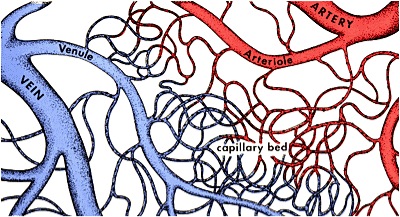I often find that aid blogs tend to criticize much, offer solutions too little. Orietta L’Abbate, CEO of AAE Australia Inc., shares her proposal for the future of aid.
What do you think? Could it work?
And if the answer is no, you’d better be ready to offer your own new idea. Let’s hear it.
***
Large scale aid intervention in large scale disaster has shown its slowness and its inability to cooperate and effectively intervene in the Haiti 2010 earthquake.
The lesson learnt in Haiti and other places would be prevention before intervention. This has been realized by some international organizations, but not all. And to approach the “big” philanthropists is virtually impossible for a small, albeit genuine, association in need of help.

I advocate for a small, but capillary, prevention scale.
Philanthropy could put in place a “one-to-one” support system whereby businesses select a “sister” local NGO to help on a 5-10 year plan. Tax deductibility must be streamlined and be transparent in this case, perhaps with a mini-Inc. or mini 501(c)3 registration. Tax departments should be happy to ensure more work for themselves and donors would have their tax deductions ensured, with the bonus of no additional administrative expenses and the money could go directly to the recipient. This would create a direct relationship and personal involvement between the business and the non-profit.
Recipients’ organizations, as small as they can be, should be locally registered and police-checked (like teachers are). Personally I prefer local associations that ensure their commitment is to all, not to “some” or with a “water-for-prayers” philosophy (yes it happens).
All monies should be allocated giving priority to income-generating activities (with embedded mandatory training), education and health, again locally implemented as much as possible. Donors’ organizations can send foreign volunteers to set up as a temporary interventions/training and their activities should be monitored by the recipients and reported on a regular basis.
Prevention includes all areas that need improvement: schools (small, sound buildings rather than large ones, and reconstruction training) agriculture (water sheds, structural plantations, plots fragmentation), evenly distributed and trained health workers (training locals) and services throughout districts, and water wells (training in maintenance and repair), etc.
Such prevention also implies a cooperation system in case of disaster, whereby neighbouring recipients and neighbouring donors aid each other in a disaster situation. This type of system would minimize damages (smaller scale is easier and less expensive to repair) and would empower local reconstruction and medical operations, as well as lessen international aid/government expenditures after disaster.
A variation could be a philanthropy network of businesses, each contributing to a part of a whole, for example whereby say 10 businesses work together towards improving 10 villages in the same area. Ten businesses could even choose to partly pay one person to organize the program.
In our very small scale, Association Amis des Enfants (AAE) Australia Inc. has been supporting Association Amis des Enfants de l’ile de la Gonâve for more than a decade. This one-to one relationship has ensured a coordinated decision-making process, direct financing, and accountability. Sure not everything has gone smoothly. Much time and money (the former being exceedingly more than the latter) has been donated to liaise and organize, but it has worked well to the benefit of the entire community around AAE.
Sure, we had a personal involvement, as we adopted from Haiti in the 1980s, but many disheartened donors would welcome a direct, transparent, and, yes, tax-deductible way to help. Of this I am sure.
In Middle Ages Europe, such a system was in place, whereby it was mandatory for each member of the trading corporations to select a charity of choice and devote to it a fixed percentage of earnings.
Why have we lost it?
And why not to resurrect it on a scale that is today technologically very possible?
***
Orietta L’Abbate can be reached at oriettala (at) gmail (dot) com.
***
Related Posts
Small is Beautiful…Grants, That Is (Part 2)
Changing the aid system: 5 more ideas from the inside
How to build strong relationships with grassroots organizations – Part 1

Nice idea- I really like it! I also agree that we are often too quick to criticize, but too slow to provide tangible solutions. This situation is very similar to what I am doing now. I’m supporting an individual NGO in Afghanistan run by women that provides legal and social services. Unfortunately, I am one individual and not an institution, and I definitely have difficulty helping them incorporate a non-profit in the US, etc, because I’m nervous to take on the entire responsibility on myself. If I had an institution backing me, it would be far more effective, I believe!